
Health and safety
Our governing documents clearly articulate requirements to prevent harm to employees and people at work sites.
Zero injuries goal
We continuously work towards an overall goal of zero injuries. To achieve this, we maintain ambitious health and safety standards to prevent hazards and incidents for all our employees and other parties working on behalf of the company. The overall responsibility for health and safety resides with senior management and the board of respective entities in Wilhelmsen. Relevant departments, including HSEQ, HR and operational teams manage and monitor the day-to-day implementation.
All employees in Wilhelmsen are responsible for reporting incidents, near-incidents, safety breaches and hazards. Employees are encouraged to report without fear of retribution i.e. a no-blame culture. Employees also have the opportunity to use our global whistleblowing system.
Incidents are evaluated and analysed by the HSEQ departments, and important lessons learned are communicated amongst the functions and relevant business units through safety bulletins and meetings.
Wilhelmsen has implemented a variety of initiatives to maintain a healthy work environment, for example focusing on the monitoring and reporting of absence cases, health & wellness awareness events, annual health checks, employee assistance program, adapted working hours, social activities, employee engagement surveys and opportunities for personal development.
Health and safety metrics
As a group, Wilhelmsen reports on five metrics in quarterly reports.
- Sickness absence rate
- Occupational disease rate
- Lost time injury frequency rate
- Total recordable case frequency rate
- Total safety observations
These metrics are reported using industry standard methods1 for two types of operations within the group:
- vessel based operations, where health and safety exposure is 24 hours per day
- onshore operations, where health and safety exposure typically is 8 hours per day
In addition, health and safety has been more formally integrated into the employee engagement survey for onshore employees. The 2017 survey introduced a new health and safety question and a new index covering psychosocial health factors. The result of the new index at 77 was positive against an external benchmark of 67. As this is a new index, we will utilise the 2017 survey score as a baseline for future surveys.
Health and safety report
In 2017, there were 38.8 million exposure hours (work hours) in Wilhelmsen with vessel based operations accounting for 78% of total exposure hours and onshore operations accounting for 22%.
Our work on vessels
Today, shipping is considered one of the most regulated industries worldwide. There is a comprehensive framework of global maritime safety regulations such as Standards of Training, Certification and Watchkeeping (STCW 95), and Safety Of Life At Sea (SOLAS).
Regrettably, there was an incident in 2017 that lead to one work related fatality on board a vessel during cargo operations. This further emphasises the need to continuously improve measures that secure a safe work environment and a robust safety culture in the group.
In 2017, the lost-time injury frequency (LTIF) rate was 0.49, within the target not to exceed 0.55. The total recordable case frequency (TRCF) rate was 2.27 within the target not to exceed 2.8. The LTIF rate target for 2018 is not to exceed 0.50. Safety observation reporting on vessel operations remains consistent with just over 8 065 observations reported for the year.
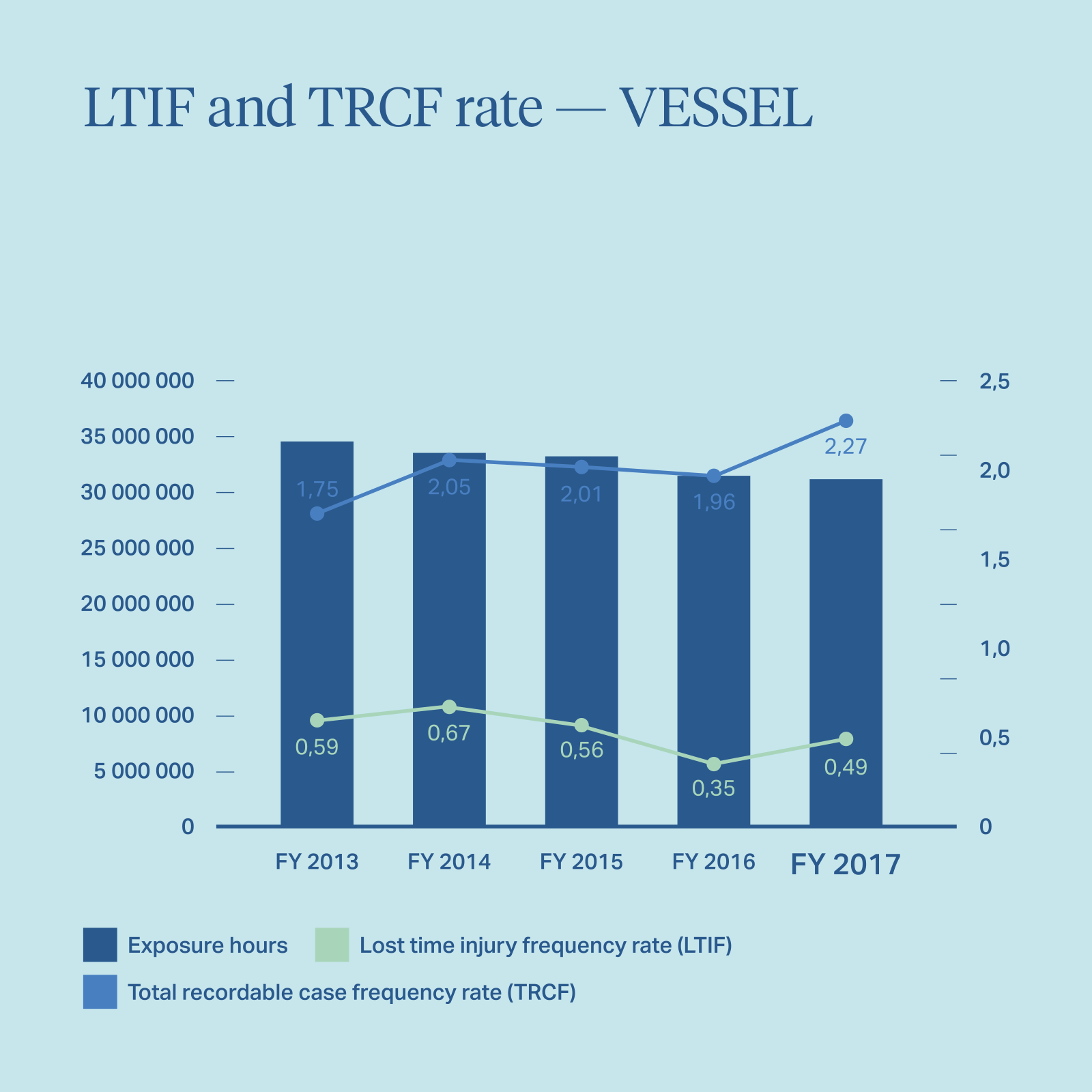
The key focus for ship management during 2017 was prevention of harm to people, environment, property and services through better reporting and utilisation of analytics to focus on key potential improvement areas. Analytics were also used to raise awareness of the crew regarding the presence of hazards on board. Further, the hazard hunt campaign continued into its fifth year with the main themes centred around improving fire safety and reducing hand and finger injuries. One of the main challenges of the working environment is the assignment of seafarers to different work locations and teams over the course of the year. Consistent attention and focus by management and individuals on health and safety and is required at all times to prevent harm and avoid issues resurfacing.
Our work onshore
We continue to build a robust health and safety culture onshore. In 2017, the lost-time injury frequency (LTIF) rate was 0.20, within the target not to exceed 0.5. The total recordable case frequency (TRCF) rate was 0.34 within the target not to exceed 1.5.
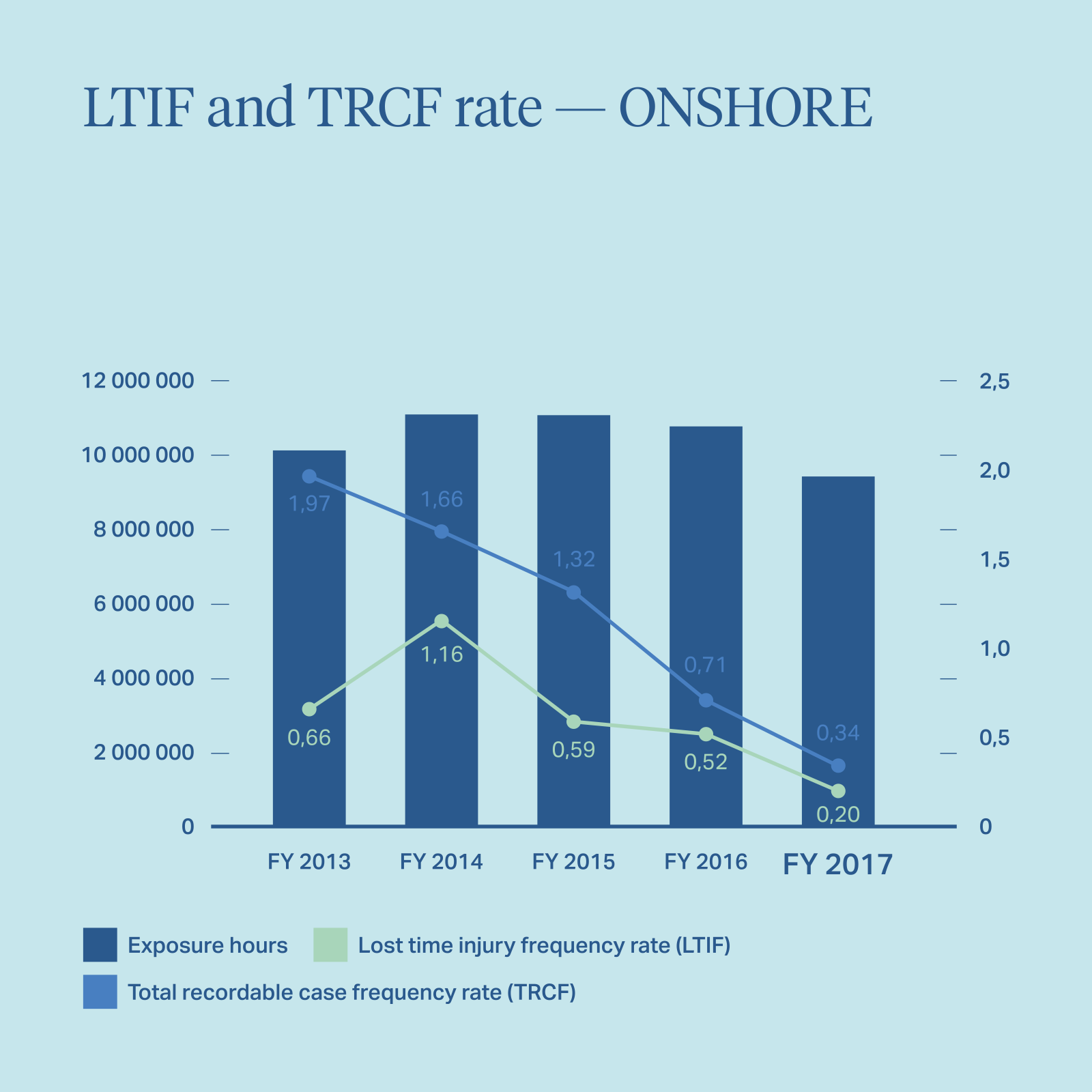
The sickness absence rate 1.56% which is in line with the 2015 base year result of 1.67%. The occupational disease case rate result of 0.07 is in line with the 2016 base year result of 0.29. The awareness, identification, monitoring and reporting of cases in all locations will continue to be a key focus area into 2018.
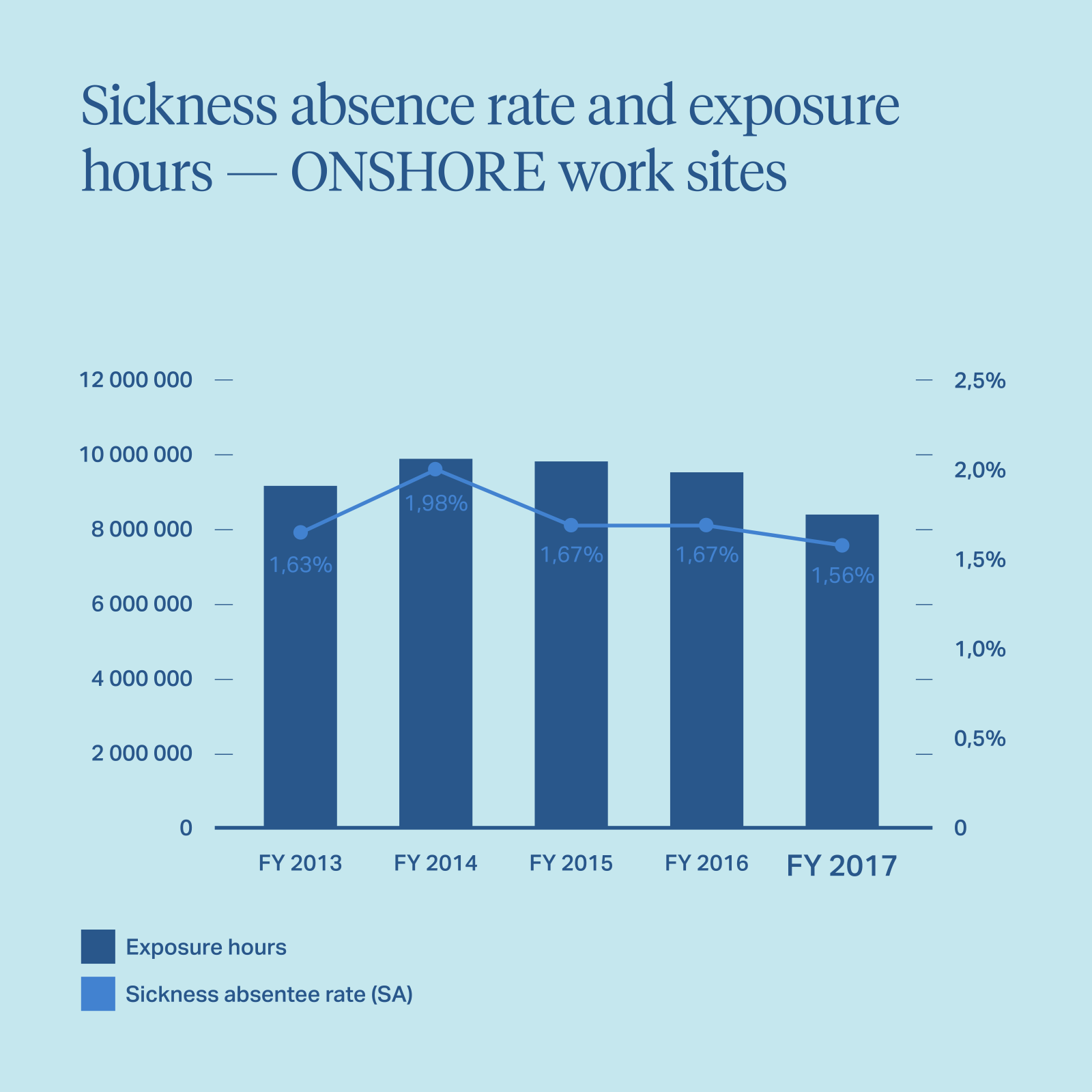
In ships service, 2017 was focused on setting a new organisation in place for better managing health, safety and environment (HSE) in day to day operations around the world. Ships service implemented a completely new organisational structure and re-allocated persons and responsibilities in HSE closer to the operations. Ships service also achieved global certification according to the OHSAS 18001 standard. A new TAKE5 risk management process was implemented in ships agency to identify health and safety hazards present at the specific time and location of where the work activity is to be undertaken. The organisation has received positive feedback from customers about the introduction of the program, reinforcing that companies who recognise safety as good practice will be favourably regarded.
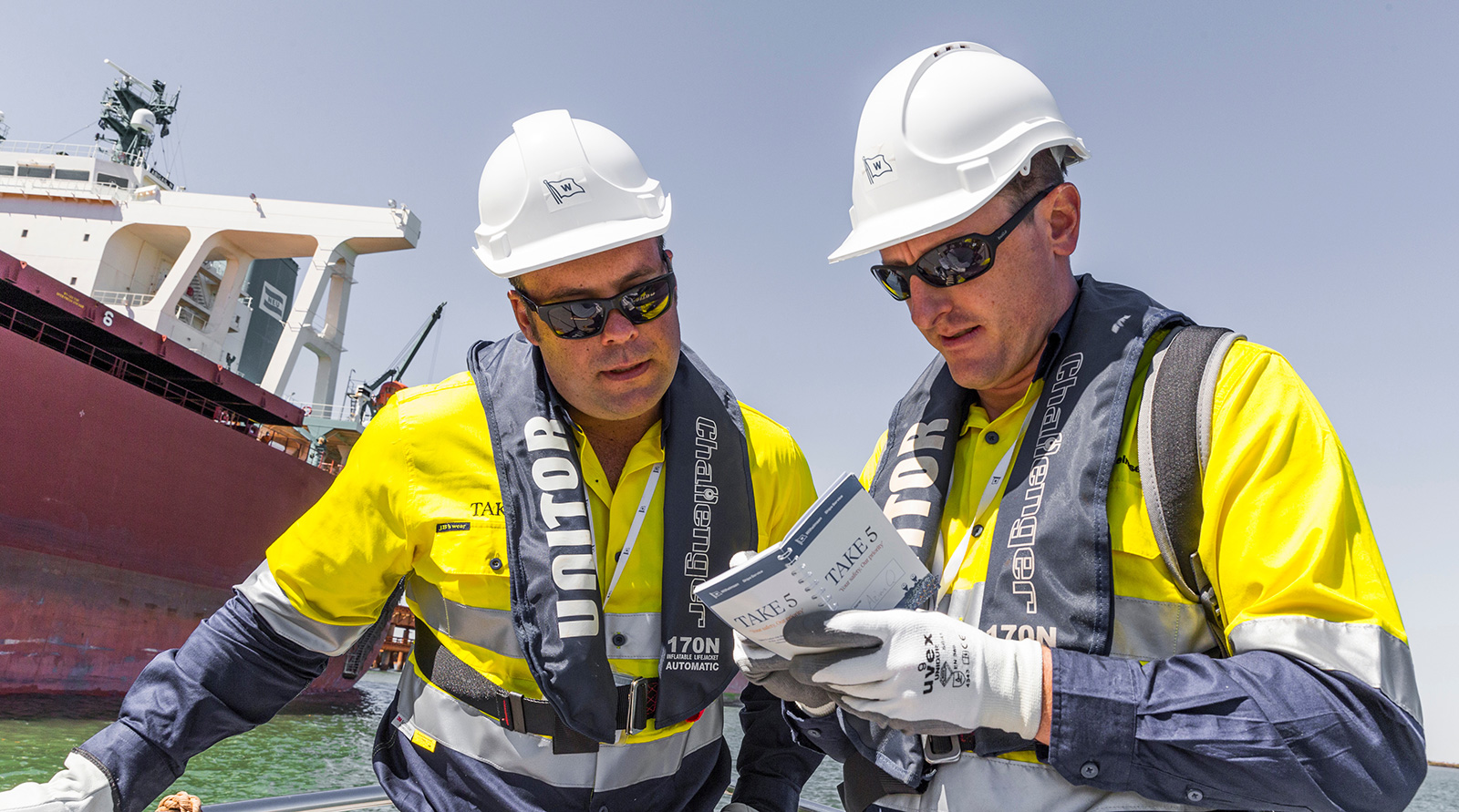
Read more about the TAKE 5 process.
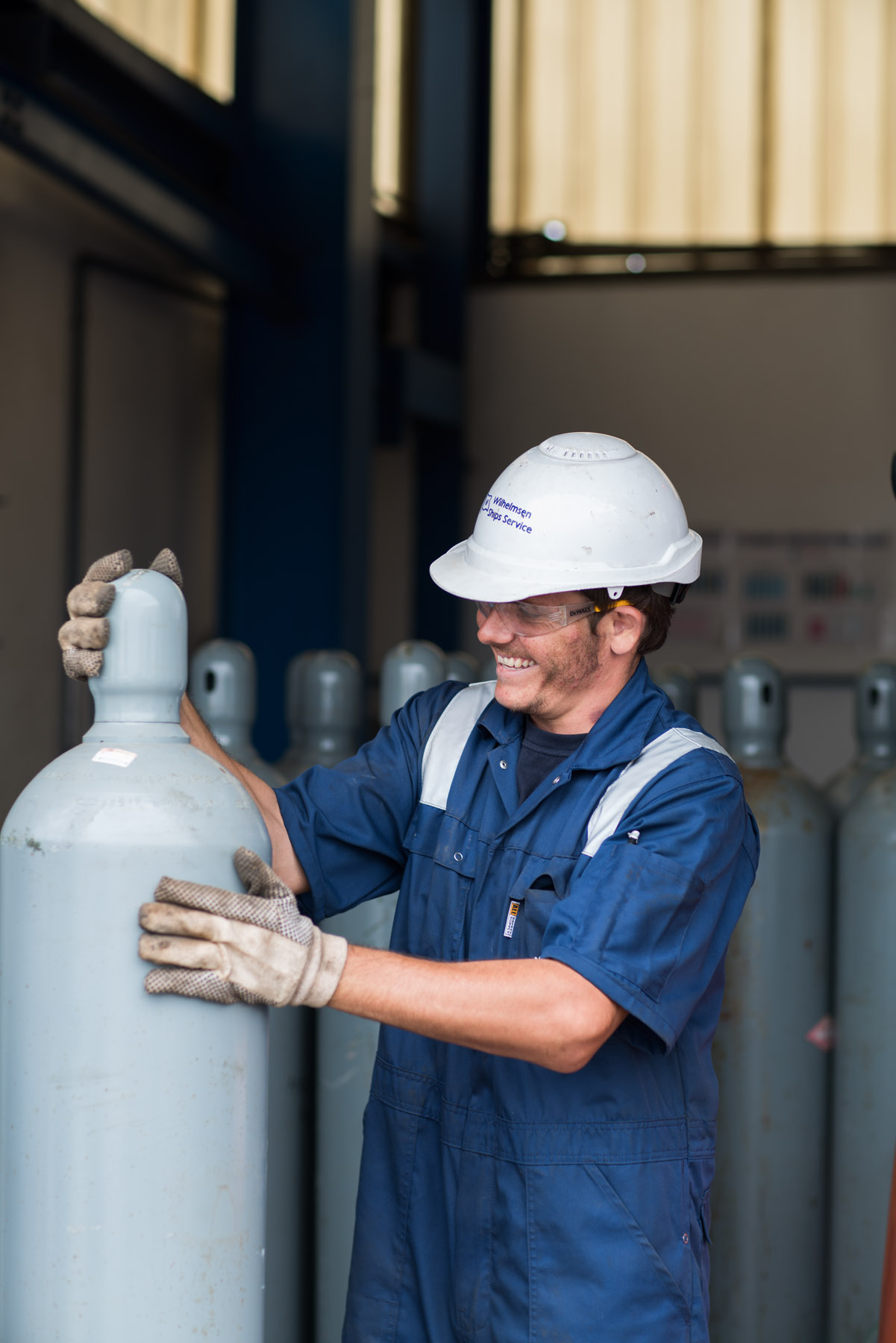
Our offices around the world also focused on boosting employee productivity through health and wellbeing programs centred around two main themes - healthy lifestyle choices and mental health. In Rotterdam, a campaign to address mental health issues was conducted giving both managers and employees tools on how to prevent, identify early warning signs and deal with work related stress. In Panama, 90% of employees participated in a Health Day event able to measure their blood pressure, speak with a weight and size specialist, obtain a flu vaccination, or have a small consultation with a general doctor. Similar health day programs were held in various locations around the world such as Kuala Lumpur, India, Singapore, Qatar, Kenya, Kuwait, South Africa, UAE and Norway. In Oceania, employees were invited to participate in local activities such as Febfast program and the Step-tember program. In the USA, awareness sessions were conducted to advise employees on how to use their benefit plan to the fullest when it comes to healthcare, costs and using online resources for wellness.
In 2018, the focus will be to further enhance these or similar programs to reach out to employees in an engaging way. Various re-orientation and re-launch of events will consistently remind employees that health and safety is the priority.
1 Industry standards – OCIMF and GRI formula are used. The common unit used for vessel operations is 1 000 000 man-hours; and on shore operations is 200 000 man-hours